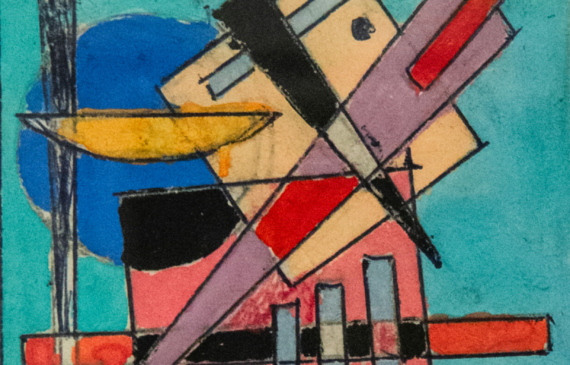
Rolph Scarlett
Canadian-American, 1889–1984
Untitled (Geometric Forms), c. 1920s
Mixed media sketch on paper
3 ½ H. x 2 ¾ W. inches
Signed lower right
Rolph Scarlett was a painter of geometric abstraction during the American avant-garde movement of the 1930s and 1940s. His work spans from action painting to surrealism, with stints designing jewelry, household objects, and constructivist stage sets.
Born in Guelph, Ontario, Canada in 1889, Scarlett was taught to paint by his grandmother. He later took art classes in secondary school and became an apprentice for his family’s jewelry firm after graduation. He left Canada at the age of 18 to go to New York City to study craftsmanship and returned to Canada during the years of World War I. However, by 1924 he had established New York City as his home. While he was beginning his career as an abstract painter, he was designing stage scenery for George Bernard Shaw’s play, Man and Superman and for the Rockettes at Radio City Music Hall.
Scarlett was inspired by lectures given by Hilla Rebay at the Guggenheim museum and began to establish his geometric style marked by an interest in color. In 1939, while in the process of creating the Museum of Non-Objective Painting (later the Solomon R. Guggenheim Museum), Director Hilla Rebay began to take an interest in Scarlett’s work. By 1940 he had become the new museum’s chief lecturer.
By 1953, the Guggenheim owned nearly sixty of his paintings and monoprints. He later became a resident of the Woodstock art colony for more than twenty-five years and showed his work in the Woodstock exhibits.